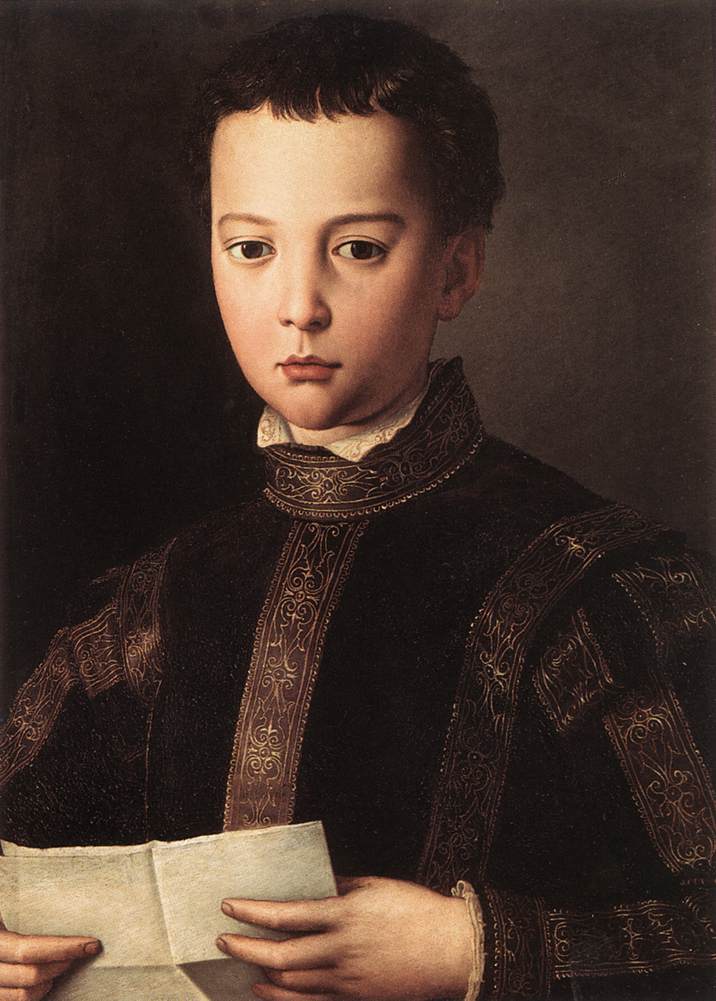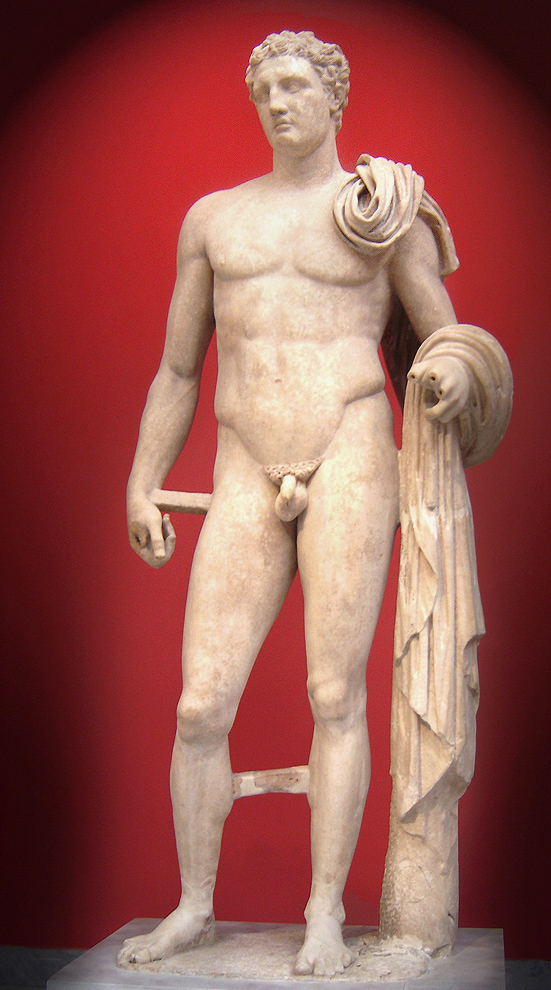|
Wrestlers (sculpture)
''The Wrestlers'' (also known as ''The Two Wrestlers'', ''The Uffizi Wrestlers'' or ''The Pancrastinae'') is a Roman marble sculpture after a lost Greek original of the third century BCE. It is now in the Uffizi collection in Florence, Italy. Description, style and authorship The two young men are engaged in the ''pankration'', a kind of wrestling similar to the present-day sport of mixed martial arts. The two figures are wrestling in a position now known as a "cross-body ride" in modern folkstyle wrestling. The upper wrestler has his left leg entwined with his opponent's left leg, with his body across the opponent's body, lifting the opponent's right arm. In a well-known modern series of wrestling moves, the upper wrestler would now try to lift his opponent's arm above his head to force a pinning move called the "Guillotine." Their muscular structure is very defined and exaggerated due to their physical and sustained effort. Neither of the two heads are original to the gr ... [...More Info...] [...Related Items...] OR: [Wikipedia] [Google] [Baidu] |
Uffizi
The Uffizi Gallery (; it, Galleria degli Uffizi, italic=no, ) is a prominent art museum located adjacent to the Piazza della Signoria in the Historic Centre of Florence in the region of Tuscany, Italy. One of the most important Italian museums and the most visited, it is also one of the largest and best known in the world and holds a collection of priceless works, particularly from the period of the Italian Renaissance. After the ruling House of Medici died out, their art collections were given to the city of Florence under the famous ''Patto di famiglia'' negotiated by Anna Maria Luisa, the last Medici heiress. The Uffizi is one of the first modern museums. The gallery had been open to visitors by request since the sixteenth century, and in 1765 it was officially opened to the public, formally becoming a museum in 1865. History The building of the Uffizi complex was begun by Giorgio Vasari in 1560 for Cosimo I de' Medici so as to accommodate the offices of the Florentine ... [...More Info...] [...Related Items...] OR: [Wikipedia] [Google] [Baidu] |
Pliny's Natural History
The ''Natural History'' ( la, Naturalis historia) is a work by Pliny the Elder. The largest single work to have survived from the Roman Empire to the modern day, the ''Natural History'' compiles information gleaned from other ancient authors. Despite the work's title, its subject area is not limited to what is today understood by natural history; Pliny himself defines his scope as "the natural world, or life". It is encyclopedic in scope, but its structure is not like that of a modern encyclopedia. It is the only work by Pliny to have survived, and the last that he published. He published the first 10 books in AD 77, but had not made a final revision of the remainder at the time of his death during the AD 79 eruption of Vesuvius. The rest was published posthumously by Pliny's nephew, Pliny the Younger. The work is divided into 37 books, organised into 10 volumes. These cover topics including astronomy, mathematics, geography, ethnography, anthropology, human physiolog ... [...More Info...] [...Related Items...] OR: [Wikipedia] [Google] [Baidu] |
Medici
The House of Medici ( , ) was an Italian banking family and political dynasty that first began to gather prominence under Cosimo de' Medici, in the Republic of Florence during the first half of the 15th century. The family originated in the Mugello region of Tuscany, and prospered gradually until it was able to fund the Medici Bank. This bank was the largest in Europe during the 15th century and facilitated the Medicis' rise to political power in Florence, although they officially remained citizens rather than monarchs until the 16th century. The Medici produced four popes of the Catholic Church—Pope Leo X (1513–1521), Pope Clement VII (1523–1534), Pope Pius IV (1559–1565) and Pope Leo XI (1605)—and two queens of France—Catherine de' Medici (1547–1559) and Marie de' Medici (1600–1610). In 1532, the family acquired the hereditary title Duke of Florence. In 1569, the duchy was elevated to the Grand Duchy of Tuscany after territorial expansion. The Medici ruled the G ... [...More Info...] [...Related Items...] OR: [Wikipedia] [Google] [Baidu] |
Francesco I De' Medici, Grand Duke Of Tuscany
Francesco I (25 March 1541 – 19 October 1587) was the second Grand Duke of Tuscany, ruling from 1574 until his death in 1587. He was a member of the House of Medici. Biography Born in Florence, Francesco was the son of Cosimo I de' Medici, Grand Duke of Tuscany, and Eleanor of Toledo. He served as regent for his father Cosimo after he retired from his governing duties in 1564. Marriage to Joanna of Austria On 18 December 1565, Francesco married Joanna of Austria, youngest daughter of Holy Roman Emperor Ferdinand I and his wife Anne of Bohemia and Hungary. By all reports, it was not a happy marriage. Joanna was homesick for her native Austria, and Francesco was neither charming nor faithful. In 1578, Joanna died at the age of thirty-one, after falling down a flight of stairs while pregnant with their eighth child. Bianca Cappello Soon after Grand Duchess Joanna had died, Francesco went on to marry his Venetian mistress, Bianca Cappello, after aptly disposing of her ... [...More Info...] [...Related Items...] OR: [Wikipedia] [Google] [Baidu] |
Valerio Cioli
Valerio Cioli (or Cigoli or Giogoli) (1529–1599) was an Italian Renaissance sculptor. Works His most famous work is the '' Fontana del Bacchino'' (1560) in the Giardino di Boboli, near the entrance to piazza Pitti in Florence. It depicts the famed dwarf buffoon at the court of Cosimo I, ironically nicknamed ''Morgante'' (after the giant of the poem ''Morgante'' by Luigi Pulci), portrayed nuded and sitting on a tortoise like a drunken Bacchus.https://www.frilligallery.com/goto/popup/catalogue-detail/show/268,5/morgante-dwarf-from-boboli-garden Two more of Cioli's works (collaborations with Giovanni Simone Cioli) are to be found in the giardino di Boboli - the ''Uomo che vanga'' (digging man) and the ''Uomo che scarica il secchio in un tino'' (man emptying a bucket into a vat). Other works of his include a ''Satyr with a flask'' in the Museo del Bargello and sculptures of personifications of Painting, Sculpture, and Architecture on the tomb of Michelangelo Buonarroti in the ... [...More Info...] [...Related Items...] OR: [Wikipedia] [Google] [Baidu] |
Antiquarian
An antiquarian or antiquary () is an fan (person), aficionado or student of antiquities or things of the past. More specifically, the term is used for those who study history with particular attention to ancient artifact (archaeology), artifacts, History of archaeology, archaeological and historic Archaeological site, sites, or historic archives and manuscripts. The essence of antiquarianism is a focus on the empirical evidence of the past, and is perhaps best encapsulated in the motto adopted by the 18th-century antiquary Sir Richard Hoare, 2nd Baronet, Sir Richard Colt Hoare, "We speak from facts, not theory." The ''Oxford English Dictionary'' first cites "archaeologist" from 1824; this soon took over as the usual term for one major branch of antiquarian activity. "Archaeology", from 1607 onwards, initially meant what is now seen as "ancient history" generally, with the narrower modern sense first seen in 1837. Today the term "antiquarian" is often used in a pejorative sense ... [...More Info...] [...Related Items...] OR: [Wikipedia] [Google] [Baidu] |
Niobids
In Greek mythology, the Niobids were the children of Amphion of Thebes and Niobe, slain by Apollo and Artemis because Niobe, born of the royal house of Phrygia, had boastfully compared the greater number of her own offspring with those of Leto, Apollo's and Artemis' mother: a classic example of ''hubris''. Names The number of Niobids mentioned most usually numbered twelve (Homer) or fourteen (Euripides and Apollodorus), but other sources mention twenty, four (Herodotus), or eighteen (Sappho). Generally half these children were sons, the other half daughters. The names of some of the children are mentioned; these lists vary by author: Other different names were also mentioned, including Amyclas and Meliboea (also in Apollodorus, see below). Manto, the seeress daughter of Tiresias, overheard Niobe's remark and bid the Theban women placate Leto, in vain. Apollo and Artemis slew all the children of Niobe with their arrows, Apollo shooting the sons, Artemis the daughters. According ... [...More Info...] [...Related Items...] OR: [Wikipedia] [Google] [Baidu] |
Porta San Giovanni (Rome)
Porta San Giovanni is a gate in the Aurelian Wall of Rome, Italy, named after the nearby Archbasilica of Saint John Lateran. History It is made up of a single grand arch built for Pope Gregory XIII in ''opera forse'' by Giacomo della Porta or, it is argued, Giacomo del Duca, who had collaborated with Michelangelo on the Porta Pia. The confusion is because the chronology of the era merely speaks of a famous architect called Giacomo. Popular tradition insists the architect was Della Porta, for he died in crowds at the gate, "which he had built" of violent indigestion brought on by melons and watermelons, returning from a trip to the Castelli Romani. Inaugurated in 1574, it had been necessitated by the reorganization of the whole Lateran area to facilitate traffic to and from southern Italy. Its opening led to the definitive closure of the neighboring and more imposing Porta Asinaria, of Aurelian date, which was by the 1570s proving unable to sustain such a high level of traffi ... [...More Info...] [...Related Items...] OR: [Wikipedia] [Google] [Baidu] |
Lysippus
Lysippos (; grc-gre, Λύσιππος) was a Greek sculptor of the 4th century BC. Together with Scopas and Praxiteles, he is considered one of the three greatest sculptors of the Classical Greek era, bringing transition into the Hellenistic period. Problems confront the study of Lysippos because of the difficulty of identifying his style among the copies which survive. Not only did he have a large workshop and many disciples in his immediate circle, but there is understood to have been a market for replicas of his work, supplied from outside his circle, both in his lifetime and later in the Hellenistic and Roman periods. The ''Victorious Youth'' or Getty bronze, which resurfaced around 1972, has been associated with him. Biography Born at Sicyon around 390 BC, Lysippos was a worker in bronze in his youth. He taught himself the art of sculpture, later becoming head of the school of Argos and Sicyon. According to Pliny, he produced more than 1,500 works, all of them in bronze. ... [...More Info...] [...Related Items...] OR: [Wikipedia] [Google] [Baidu] |
Hellenistic Art
Hellenistic art is the art of the Hellenistic period generally taken to begin with the death of Alexander the Great in 323 BC and end with the conquest of the Greek world by the Romans, a process well underway by 146 BCE, when the Greek mainland was taken, and essentially ending in 30 BCE with the conquest of Ptolemaic Egypt following the Battle of Actium. A number of the best-known works of Greek sculpture belong to this period, including ''Laocoön and His Sons'', ''Venus de Milo'', and the ''Winged Victory of Samothrace''. It follows the period of Classical Greek art, while the succeeding Greco-Roman art was very largely a continuation of Hellenistic trends. The term ''Hellenistic'' refers to the expansion of Greek influence and dissemination of its ideas following the death of Alexander – the "Hellenizing" of the world, with Koine Greek as a common language. The term is a modern invention; the Hellenistic World not only included a huge area covering the whole of the Aege ... [...More Info...] [...Related Items...] OR: [Wikipedia] [Google] [Baidu] |



